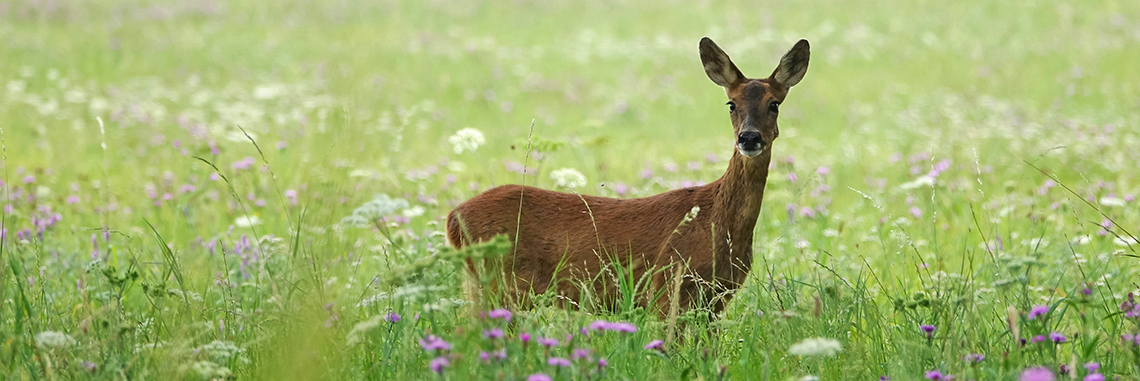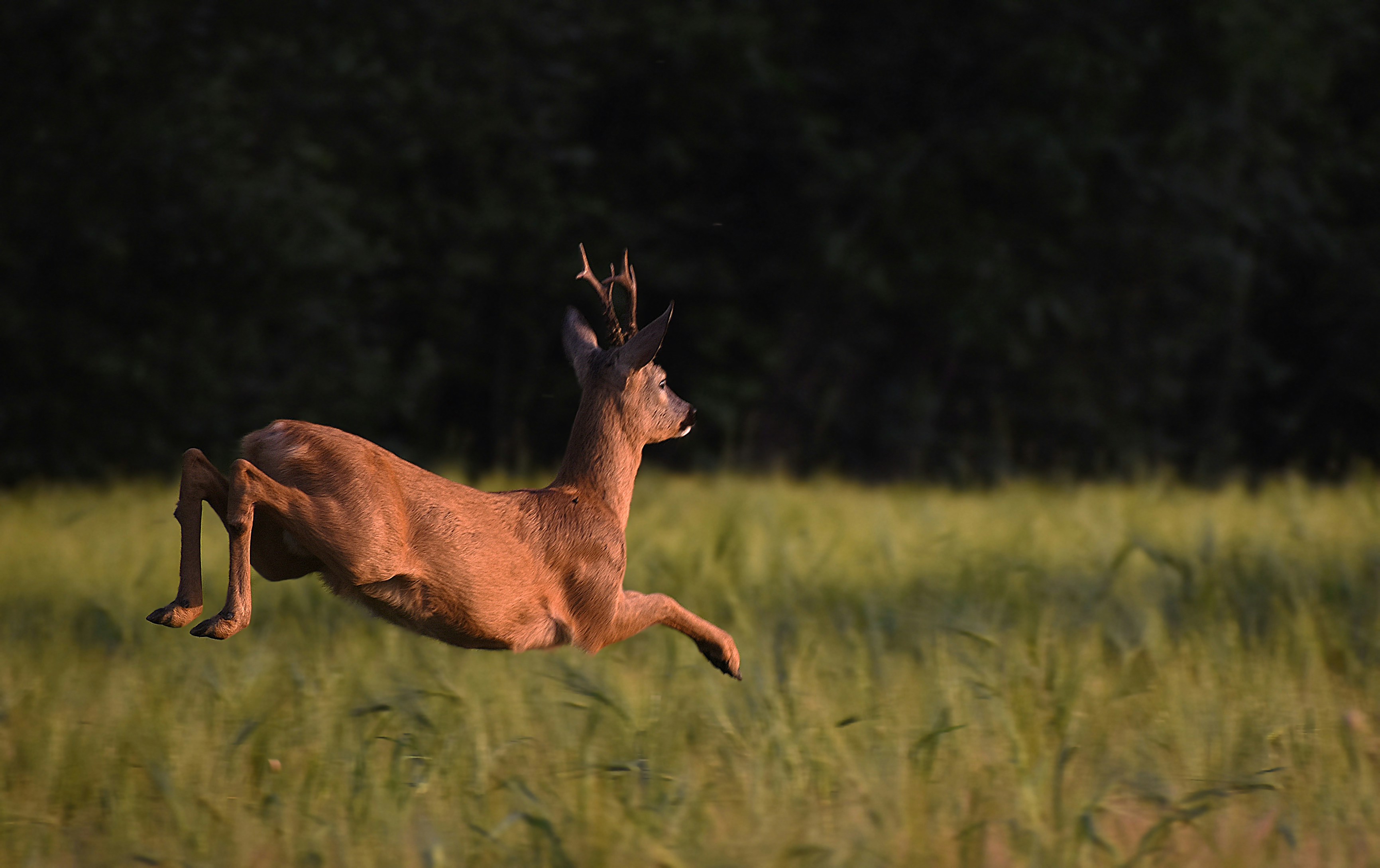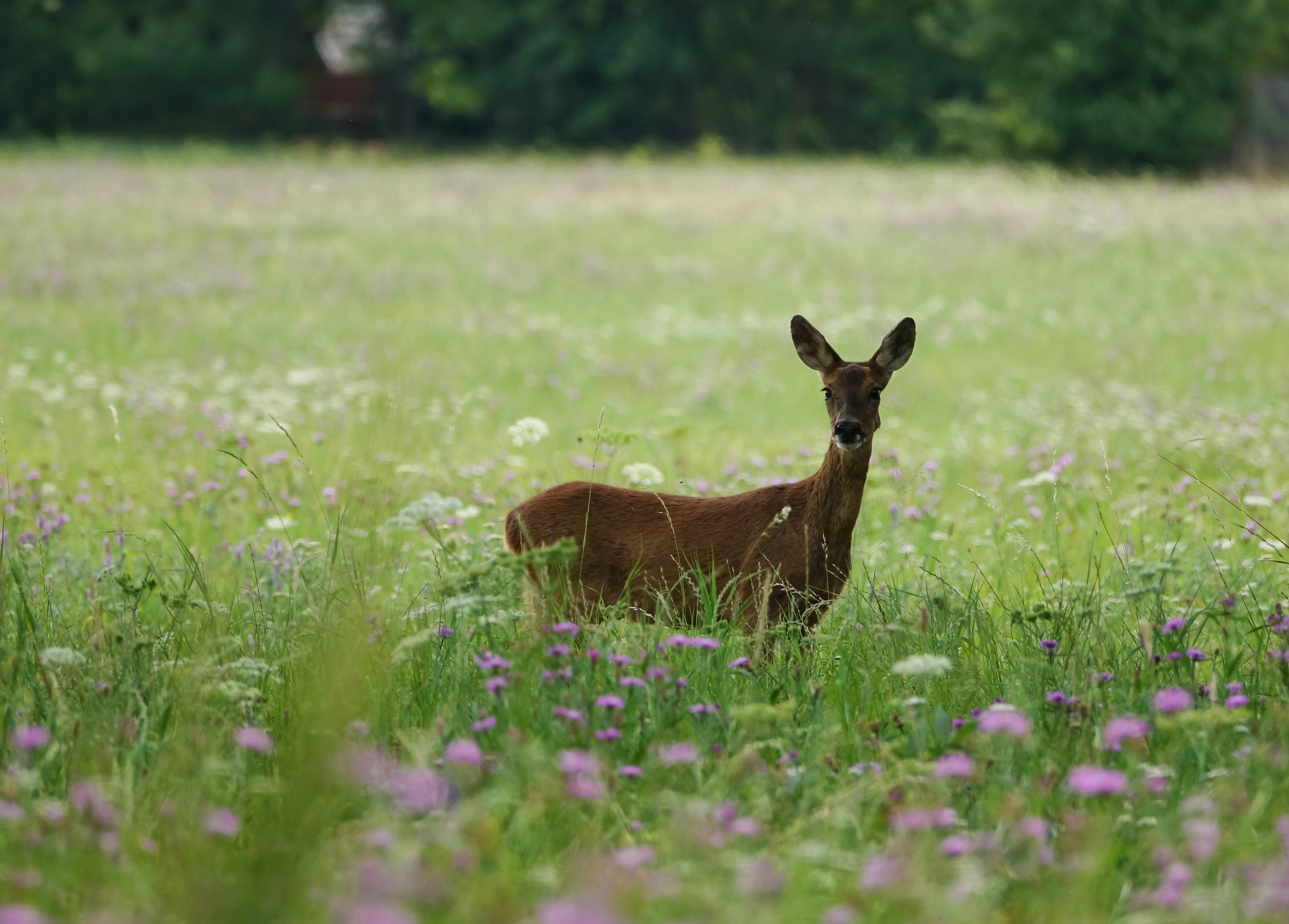The Graceful Beauty of the Roe Deer

By Jose Luis Gallego, environmental communicator (@ecogallego)
In a forest clearing, a young male roe deer haughtily regards the presence of the fortunate nature lover who, out on a morning walk, has unexpectedly crossed his path. Both hold perfectly still, not daring to move a single muscle, their eyes fixed on each other. It is only an instant, yet time seems to slow down magically.
Shortly after this fortuitous and respectful encounter, the animal turns its head and continues on its way, unperturbed, moving steadily and silently until disappearing amid the trees. The nature lover decides against following the animal, content with the moment they just shared. He didn’t even get the chance to look through his binoculars. Such was the spell cast by the refined and elegant presence of the roe deer.
Encountering a large, freely roaming, mammal of the Iberian fauna is one of the most moving moments a nature lover can experience when out in the wild. Deer, foxes, fallow deer, bears, chamois, lynxes, wolves, mountain goats…each run-in with these wildlife luminaries is a gift of providence.
Setting aside the undeniable merits of spotting a species as rare and threatened as the Iberian lynx, brown bear or Iberian wolf, few nature encounters are as moving as contemplating the mesmerizing and elegant beauty of the roe deer: an animal that, despite becoming increasingly ubiquitous and abundant, still brings the author of this article the same rush of exhilaration as when he was small and roe deer a far less common sight.
Notably smaller than regular deer, roe deer are the smallest Iberian cervid. Slender and graceful, roe deer have short reddish-brown fur in summer that darkens in the winter. Their lower body is much lighter in colour. They have small heads with striking black eyes that match their snouts, and large, triangular ears, almost always alert and upright.
The male roe deer grows small antlers (much smaller than those of deer) with three slightly forked points: two pointing forward and one back. Their hindquarters are longer and more muscular than their front legs, which tends to give the roe deer the appearance of leaning slightly forward. Very well built and perfectly proportioned, roe deer are a little over a metre long and 75 cm at their shoulder. They usually weigh between 25 to 30 kg.
The roe deer is a woodland cervid, at home in the Mediterranean ecosystem, and has adapted to all sorts of habitats, resulting in one of the most astonishing demographic explosions of recent years, comparable in some areas to that of the wild boar. Consequently, roe deer have now reclaimed territories from which they had once disappeared. That said, they do prefer coniferous or broad-leaved forests with thick, tall brushwood and occupy a wide range of ecosystems, from coastal to high mountain areas.

A roe deer in a field
An exclusive herbivore, roe deer eat all sorts of plants: fresh grasses, stems and wildflowers, fresh shoots, tubers, berries, and wild fruit. They base their diet on the season and their habitat, taking advantage of whatever the local trees and shrubs have to offer, from bark to leaves.
They are most active at dusk, preferring to spend the day hidden among the thickest brushwood. Once they’re out in their grazing territories, roe deer are hyper-vigilant – it’s their best defence. At the slightest sign of danger, the dominant individual emits a loud bark-like sound, dry and rough, that sounds the alarm for the entire group, which promptly flees. This is when their ability to leap and bound is an asset, propelled by their well-developed and muscular hindlegs.
One curious thing that sets roe deer apart from their cervid relatives, like deer, is their mating season, which occurs in the middle of summer, from late June until late August, occasionally even lasting well into September in some parts of the northern peninsula.

A roe deer
What is also worth noting is their strikingly different mating behaviour, far more discreet and reserved than the deer rut. The herd gathers together, and the males, which tend to be monogamous, engage in some light skirmishes. Nothing even remotely comparable to the aggressive and outrageous displays during the deer rutting season, when stags lock horns and battle each other, their loud roars resounding throughout the mountains.
Another characteristic of this species is that although mating takes place in summer, females don’t give birth to their fawns until late the following spring, when food is abundant, and the forest’s thicker canopy and undergrowth provides better shelter and protection. This delay is possible due to a reproductive strategy known as embryonic diapause. After fertilization, the development of the embryo is delayed by almost half a year so that female roe deer can give birth between April and May when foraging for food is easy and the forest offers plenty of hiding places. Everything about the roe deer is magical.
